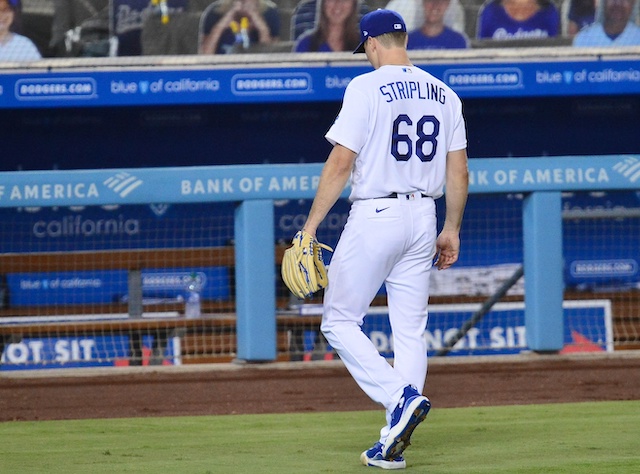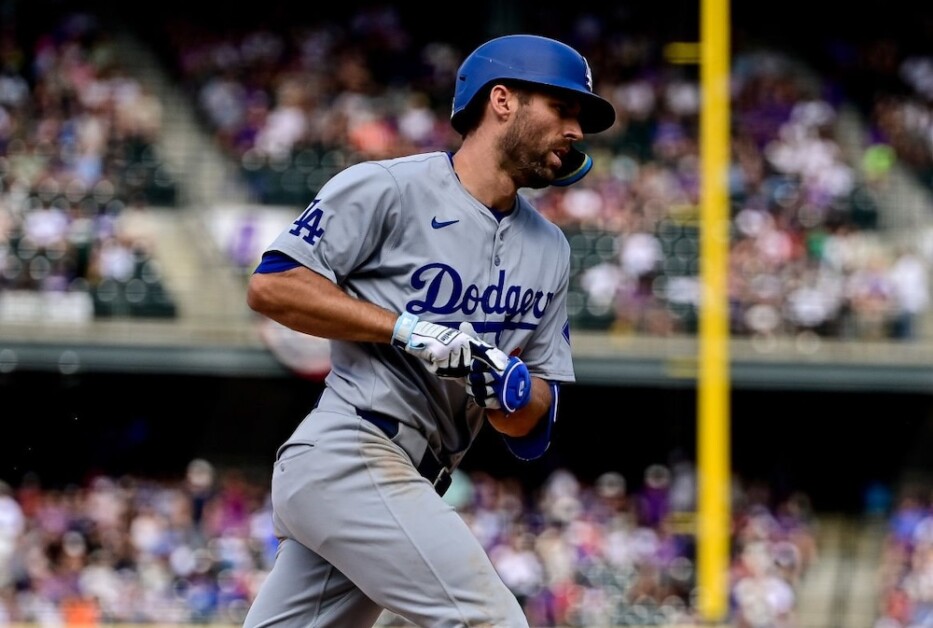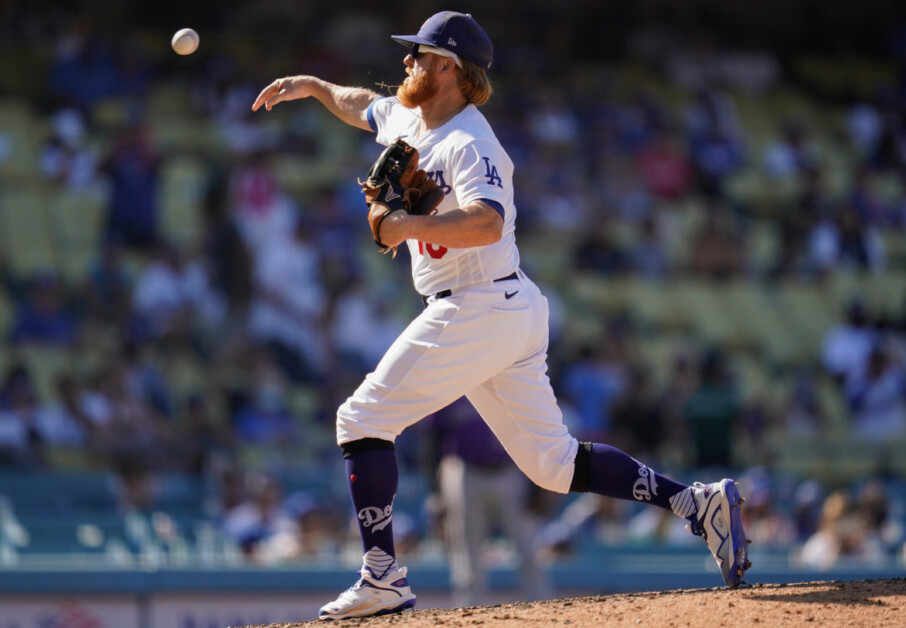The Los Angeles Dodgers completed a three-game sweep of the Colorado Rockies on Sunday, improving to a Major League-best 22-8 on the year. The club provided Ross Stripling with early run support, pushing a total of 11 runs across the plate as part of a seven-home run outburst.
The right-hander, however, did not factor into the decision, as he logged just four innings of work. Stripling threw 64 pitches (39 strikes) in the outing, allowing two runs on six hits (two home runs) with two strikeouts.
“They were definitely able to put the ball in play and get some hits,” he said. “I thought it was a step forward from my last two outings. I’m still taking way too much damage on fastballs. I feel like I have no room for error on fastballs right now; both homers were fastballs.
“But encouraged I got more balls put on the ground. Historically over the last four seasons, I’ve been much more ground balls to air outs. This year has been way more air outs, and obviously leading to more home runs.
“I thought it was a step in the right direction. Obviously not very efficient, not even able to get into the fifth inning but at least from the last two outings it was moving forward and doing things better.”
Through six starts, Stripling has allowed a Major League-worst 10 home runs, which translates to a whopping three homers per nine innings.
He attributed the surge to not getting as many ground ball outs as he has in previous seasons. Stripling’s 32% ground ball rate thus far would mark a career-low while his 41.2% fly ball rate is a career high.
But as Stripling noted, his struggles with keeping the ball in the park don’t stop there. All but one of the 10 home runs he has allowed this season have come off his fastball.
“I think it’s a lot of location. The Story and McMahon homers are similar the ones I gave up last week,” Stripling explained. “They’re in or away, but their midline. They’re neither up or down, and I feel like I’m good enough with my fastball location that I should be able to go to each quadrant: up, down, in and out.
“These have all been belt-line away, or belt-line in, and they’re able to get enough of it, get it up in the air and get it over the fence. I think it’s a little fine-tuning there. Yeah, I can go in and out to the plate, but then it has to be up or down, so that I’m not getting as much damage on it.”
One pitch that Stripling has actually been pleased with is a revamped changeup. “I like it. It’s not as consistent as I want it to be, but it’s definitely a weapon for me,” he said.
“It’s something I feel I can throw in any count, especially when it’s a good day with it; I can throw it anytime to lefties and righties.
“I still think it has some work to be a weapon against righties, but to lefties, I feel really good with it so far. I think it’s come a long way and it’s something that should be a great weapon for me moving forward.”
Dave Roberts agrees with Stripling
When evaluating his start, Dodgers manager Dave Roberts echoed Stripling’s comments that a lack of fastball command has resulted in an uptick in home runs. “I think it’s a location problem. Ross has always been a next-level command guy,” Roberts said.
“I thought the sequencing was considerably better today and he just missed with the fastball. He’s a guy that’s always prepared, always working. Looking forward to his next start and just continuing to get better.”
Have you subscribed to our YouTube channel? It’s the best way to watch player interviews, exclusive coverage from events, participate in our shows, and more!








